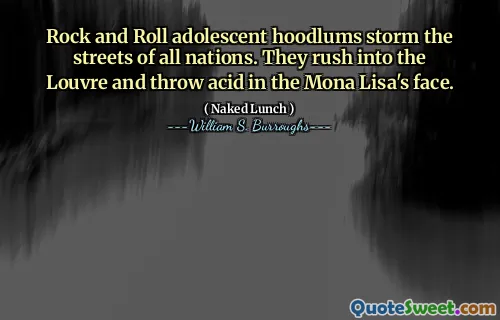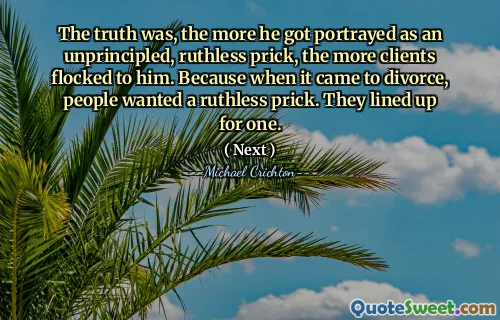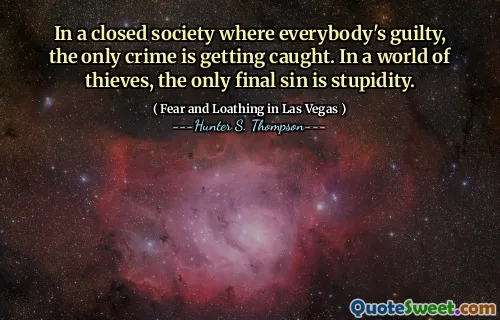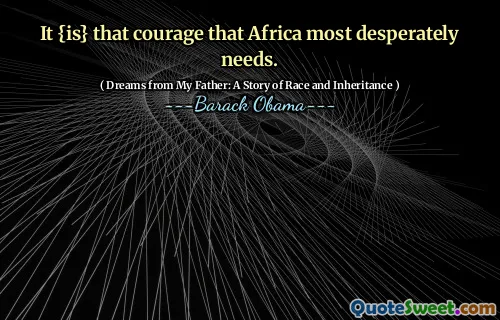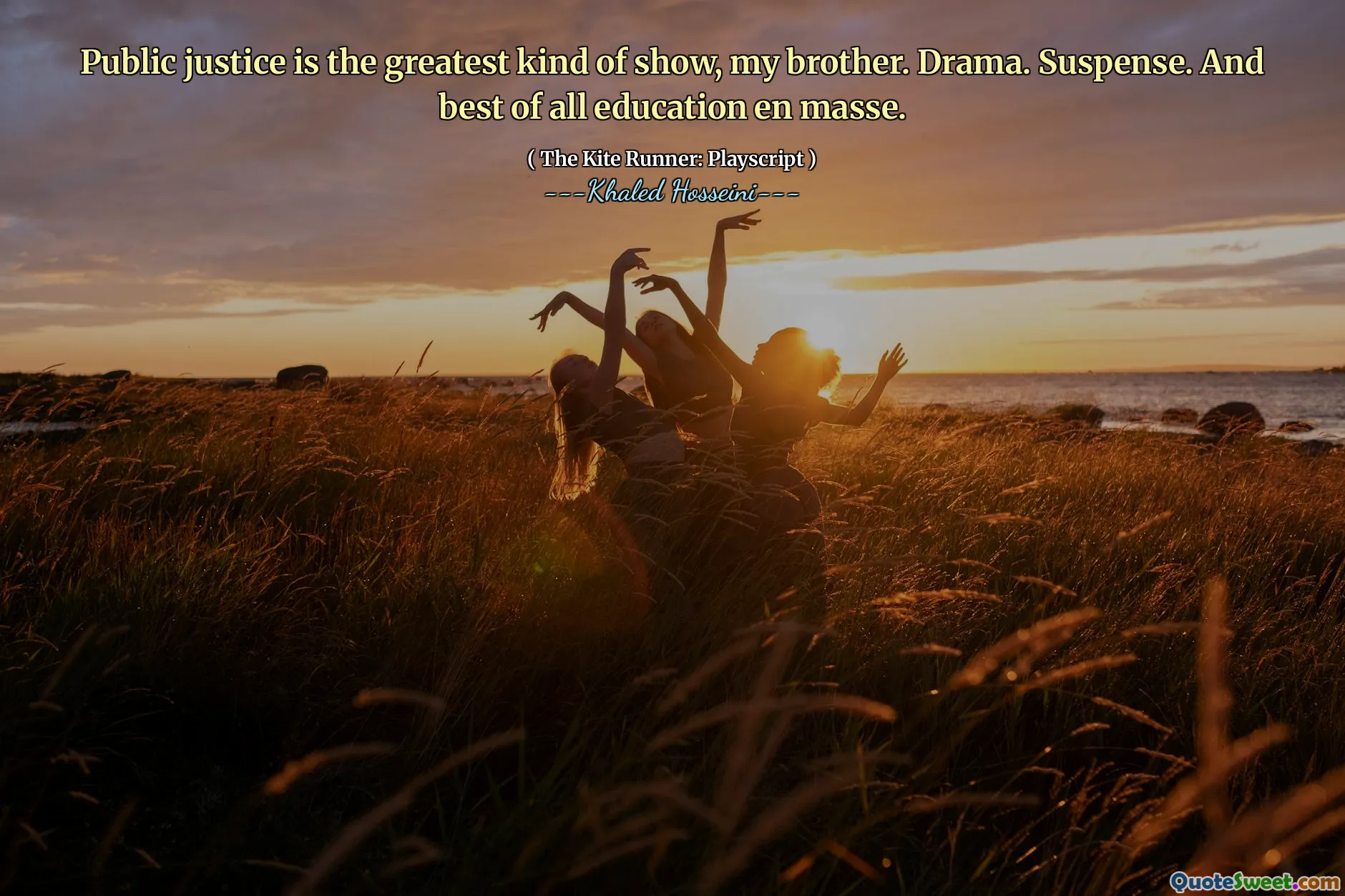
Public justice is the greatest kind of show, my brother. Drama. Suspense. And best of all education en masse.
This quote, originating from "The Kite Runner: Playscript" by Khaled Hosseini, profoundly encapsulates the theatrical nature of justice when it occurs in the public eye. The juxtaposition of "public justice" with terms like "show," "drama," and "suspense" reveals a perception of legal proceedings not merely as objective executions of fairness but as performances that captivate and engage audiences beyond the courtroom walls. This idea opens a rich space for contemplation about the role and impact of justice systems in society.
In many ways, justice being a "show" illustrates how societal values and narratives are broadcast and reinforced through public trials. These proceedings often become stages where societal norms, cultural ideals, and moral lessons are displayed, debated, and sometimes challenged. The reference to "drama" and "suspense" elevates legal processes into storytelling mechanisms, where outcomes are awaited with tension akin to acts in a play. This conveys not only the emotional investment communities place in justice but also the somewhat performative aspects that can arise when justice is under public scrutiny.
Yet, the quote does not end with mere spectacle; it highlights that the "best of all" in this public display is "education en masse." This points to a crucial, hopeful element—that public trials serve as educational moments for societies at large. They teach citizens about the limits of power, the consequences of actions, the importance of accountability, and the societal commitment to fairness and truth. The public nature of justice, therefore, becomes a powerful instrument for collective learning, shaping public opinion and fostering a sense of participation and vigilance among people.
However, this framing also invites critical reflection. While justice as a public show can enhance transparency and education, it risks transforming serious legal matters into mere entertainment, potentially diluting the gravity of individual experiences in favor of spectacle. It raises questions about whether the emotional intensity and theatricality serve or hinder the fair administration of justice.
Overall, this quote encourages reflection on justice as both a legal process and a social phenomenon. It underscores the dual roles of the justice system—in enforcing laws and in educating the public—while also cautioning against the pitfalls of turning justice into performance. It is an insightful reminder that justice, in public, carries the power to shape not only verdicts but also societal consciousness.

